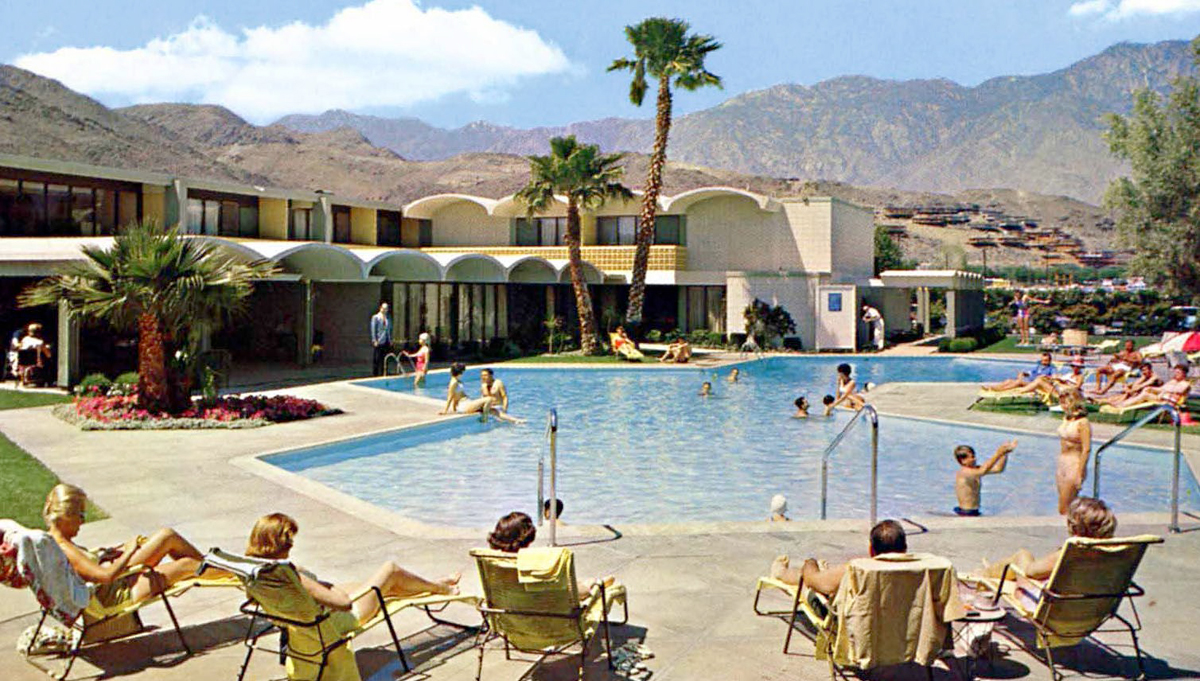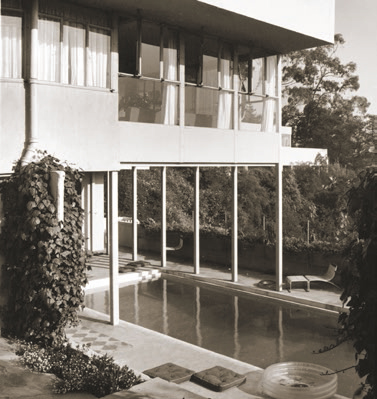Splash! - Page 3
 |
|
|
 |
|
|
 |
 |
|
|
The image was not planned in advance. Shulman, who was on site with the architect, was shooting interiors when he noticed the dying evening light. Unlike many architectural photographers, Shulman liked including people in his shots. In this case, the languid lady reposing by the pool not only suggests a reclining Odalisque in a seraglio, but her body quite conveniently blocks glare from a pool light.
Another of the most attention-grabbing postwar pools was designed by the famous landscape architect Thomas Church as part of a residential garden, with a view towards San Pablo Bay, on the Donnell Ranch in Sonoma County.
Widely publicized, this kidney-shaped turquoise paradise in what is today the Carneros wine country, evoked the perfect image of sybaritic California. The pool, which was shown on the cover of a 1951 House Beautiful magazine, has been called "an iconic symbol of postwar modernist design and the 1950s California good life." In the center is another curvaceous beauty, a sculpture of what seems to be an abstract reclining nude, by Adaline Kent.
"Thomas Church's Donnell garden of 1948 immortalized the kidney as the archetypical Californian pool shape," Marc and Dorothée Imbert wrote in their book Garrett Eckbo: Modern Landscapes for Living. They added, "…the design captured the imagination of readers and designers, nationally and internationally, as the epitome of a modern setting for outdoor living."
Other riveting photos of a pool with a view, but one taking in not bay lands but the Los Angeles metropolis in all its glitter, were produced by Shulman, this time shooting architect Pierre Koenig's Stahl House. The house was built as part of Arts & Architecture magazine's Case Study House project in 1959 and widely publicized in that magazine—and in many others besides.
This pool-spa combo, a series of simple rectangles to match the simplicity of the house, is perched at the edge of a Hollywood Hills—and glows from underwater lighting.
Another Los Angeles architect, John Lautner, who won fame for his flying-saucer-shaped Chemosphere House, included pools in his homes from early in his career. Some of his later pools are pure sculpture, melded into the concrete curves of the homes in which they form play spaces and objects of visual pleasure.
Annie Kelly and Tim Street-Porter include several in their book, including one they say is particularly important in the history of pool-dom.
"John Lautner designed the first infinity pool ever," Annie says. An infinity pool is one whose water stops not at a wall—but, apparently, nowhere. The water spills right over the edge.
"This is in the ‘50s!," she goes on. "I was even surprised when I learned that. Lautner designed it for a house called Silvertop in Silver Lake. The inspiration was the lake itself, because the lake stretched out below the house. Hence the design of the infinity pool, to make it seem to be part of the lake."
The innovative landscape architect Garret Eckbo collaborated with Lautner on the pool's design, as well as providing the rest of the landscape plan.
Along with Tommy Church, Eckbo and his onetime partner Robert Royston did much to establish the backyard pool not just as a place for play but also as an integral part of the overall landscape design.




